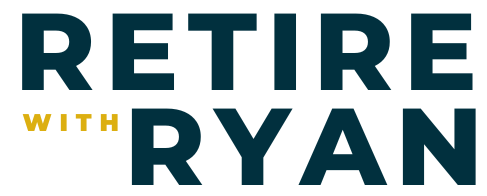SEP IRA vs Solo 401(k), #182
Are you a small business owner struggling to choose a retirement plan? Then this episode is for you! Join me as we look at the specifics of SEP IRAs and Solo 401(k)s, the pros and cons of each, and the easiest way to get your small business or self-employed retirement plan set up today.
You will want to hear this episode if you are interested in...
What are SEP IRAs and Solo 401(k)s? [1:43]
The pros and cons of each retirement plan [8:16]
Setting up a Solo 401(k) or SEP IRA [12:27]
Defining the SEP IRA and Solo 401(k)
As a small business owner, navigating the realm of retirement plans is crucial for securing your financial future. Whether your business is your full-time pursuit, a part-time venture, or garners intermittent 1099 income, your choice of retirement plan can significantly impact your tax savings and nest egg. Two primary options stand out: the SEP IRA and the Solo 401(k), each with nuances and advantages. If you aim to save $7,500 or less annually and lack other retirement plans, a traditional IRA could offer simplicity. However, for those seeking higher contributions and potential borrowing capabilities, delving into the specifics of SEP IRAs and Solo 401(k)s is vital.
A Simplified Employee Pension (SEP) IRA permits contributions of up to 25% of net business income, capped at $66,000 in 2023 (increasing to $69,000 in 2024). Notably, this plan only allows employer contributions, making it ideal for self-employed individuals—sole proprietors, partnerships, or certain LLC structures. Self-employed individuals are limited to contributing 20% of their net profit. On the other hand, a Solo 401(k), often referred to as a Uni-K, caters to sole proprietors or business owners with a spouse involved in the enterprise. This plan mirrors the contribution limits of the SEP IRA but distinguishes itself by enabling both employee and employer contributions. In 2023, employees can contribute up to $22,500, with a $7,500 catch-up if over 50, summing up to $30,000. By 2024, these limits increase to $23,000 and $30,500, respectively. Furthermore, the Solo 401(k) allows for a profit-sharing or employer contribution of up to 25% of net business profit or 20% for self-employed individuals, reaching the same contribution caps mentioned earlier.
Weighing the pros and cons
As a small business owner seeking the right retirement plan, the choice between a SEP IRA and a Solo 401(k) demands careful consideration. SEP IRAs offer simplicity and ease of administration; you can allocate up to 20% of your net business income. However, their inflexibility concerning employee contributions and limited options for loans might pose challenges, especially if you plan to expand your workforce. Moreover, the absence of a Roth option and complexities around backdoor Roth IRA contributions are important factors to note.
Solo 401(k)s present an attractive alternative. They allow for both employer and employee contributions, offering more flexibility with a higher contribution limit, including catch-up provisions for individuals aged 50 and older. The Solo 401(k) permits a Roth version, facilitating tax diversification, and provides the option for loans up to a certain limit, enhancing financial flexibility. Nevertheless, this plan becomes less advantageous when hiring non-spouse employees, triggering a shift to a traditional 401(k) and incurring higher administrative burdens and costs. While both retirement plans are good options, the right decision depends on individual circumstances, financial goals, and future business plans. Listen to this episode for more insight!
Resources Mentioned
Subscribe to the Retire with Ryan YouTube Channel
Self-Employed Individuals – Calculating Your Own Retirement-Plan Contribution and Deduction
Connect With Morrissey Wealth Management
www.MorrisseyWealthManagement.com/contact
